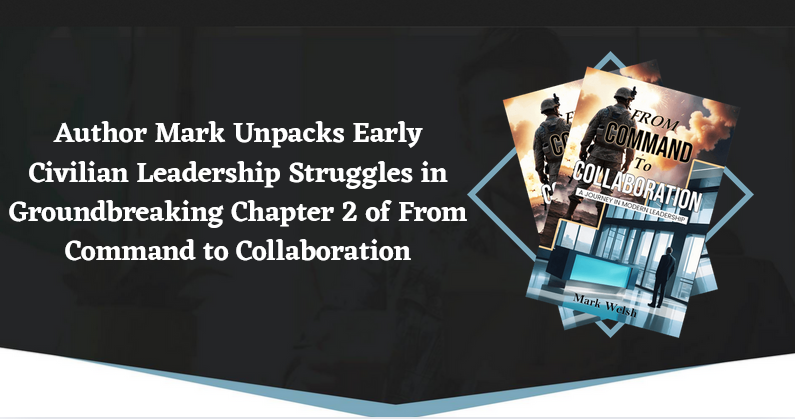Leadership author and veteran Mark dives deep into the challenges of transitioning from military command to civilian management in Chapter 2: Early Missteps in Civilian Leadership of his critically praised book, From Command to Collaboration: A Journey in Modern Leadership. This candid and instructive chapter highlights the often-overlooked learning curve that comes with applying military leadership principles to business, nonprofit, and civilian environments, offering a valuable lens into the development of adaptive resilience, smarter decision architecture, and leadership in all forms.
Drawing from real-life setbacks and powerful feedback from civilian colleagues, Chapter 2 explores how rigid command structures can clash with collaborative workplace cultures, and how those failures ultimately led to personal growth and transformation. The message is clear: even the strongest leaders must evolve to remain effective.
“In the civilian world, authority must be earned, not assumed,” Mark writes. “That realization was the first step in becoming the kind of leader who multiplies impact instead of just issuing orders.”
Table of Contents
Adaptive Resilience Through Failure
Mark’s early civilian leadership was marked by frustration, disengagement, and employee turnover, all signs that his military-honed style wasn’t translating. But instead of retreating, Mark embraced adaptive resilience, recognizing that growth comes from learning, not perfection.
Chapter 2 captures this pivotal mindset shift. Mark’s willingness to accept feedback, adjust his leadership approach, and engage in self-reflection sets the tone for what modern leaders must do in today’s dynamic environments: adapt or fall behind.
Decision Architecture in Civilian Contexts
In this chapter, Mark also addresses a common disconnect, how decisions are made in civilian workplaces versus military operations. Civilian environments value participation, collaboration, and emotional nuance. Mark learned the hard way that successful decision architecture in business isn’t about giving orders, it’s about creating inclusive systems that encourage input, creativity, and shared accountability.
His new decision-making model empowers teams while maintaining clarity and direction, offering readers a proven framework for designing decision processes that are both efficient and human-centered.
Becoming an Impact Multiplier, Not a Micromanager
Chapter 2 vividly illustrates the transformation from command-style oversight to the role of an impact multiplier. Through honest anecdotes, including failed team meetings and demoralized employees, Mark shows how leaders who empower others, seek input, and delegate effectively see better results and build stronger teams.
These lessons are especially relevant in today’s remote and hybrid work environments, where trust and autonomy drive performance.
Leadership in All Forms Requires Adaptability
Ultimately, Chapter 2 is a reminder that leadership in all forms; whether in the military, private sector, education, or community, requires humility, emotional intelligence, and a commitment to continuous growth. Mark’s journey provides inspiration for veterans, first-time managers, and seasoned executives alike.
From Command to Collaboration continues to resonate with leaders worldwide, and Chapter 2 delivers one of its most relatable and practical insights yet.
For review copies, media interviews, or speaking engagements, contact:
Author: Mark Welsh
Amazon: From Command To Collaboration: A Journey In Modern Leadership
Website: https://mark-welsh.com/

